This post may contain affiliate links. Please read our disclosure policy.
Salsa Macha is a popular and unique Mexican oil-based salsa that brings a burst of flavor to any dish. This recipe is made with a combination of dried chiles, garlic, nuts, and oil, all blended together to create a rich and spicy salsa.
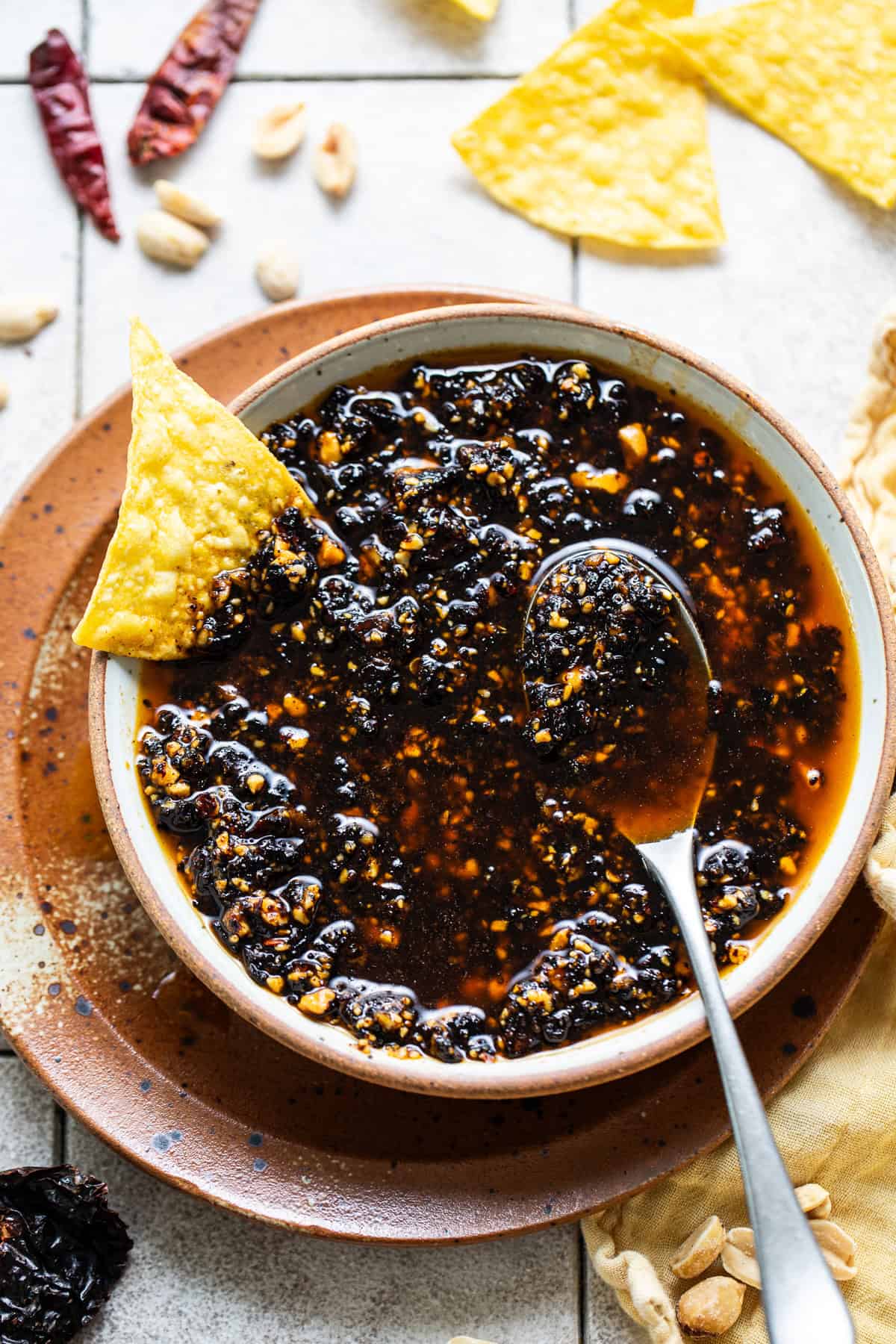
If you’re a fan of spicy, smoky flavors, salsa macha is about to become your new go-to condiment.
This versatile Mexican sauce packs a punch and can be used to elevate everything from tacos and grilled meats, to soups and even pasta.
It has a complex flavor profile with the best crunchy texture. The heat level can vary depending on the types of chiles used, so you can customize the spice level to your preference.
Here’s why I love this recipe:
- Easily adjustable. You can easily adjust the spice level by swapping out the dried chiles, or removing the seeds. I’ve included some suggestions for easy substitutions in the Variations section below.
- Stores well. This salsa can be refrigerated for up to 1 month, making it great to batch and use in so many different recipes.
What is Salsa Macha?
Salsa macha is a rich and unique salsa from Veracruz, Mexico. It translates to “brave salsa” and is called so because of its bold and intense flavor.
This traditional Mexican salsa is made by frying and then blending/pulsing ingredients like dried chiles, nuts, seeds, garlic, and oil.
Depending on the region, there are some different cooking methods for salsa macha. Most cooking methods use a fair amount of oil to fry and toast the ingredients, giving it a texture close to a chile oil.
Salsa macha is usually used as a topping or garnish instead of a dipping salsa because of its thick texture and intense flavor. But of course, I also really like it with tortilla chips!
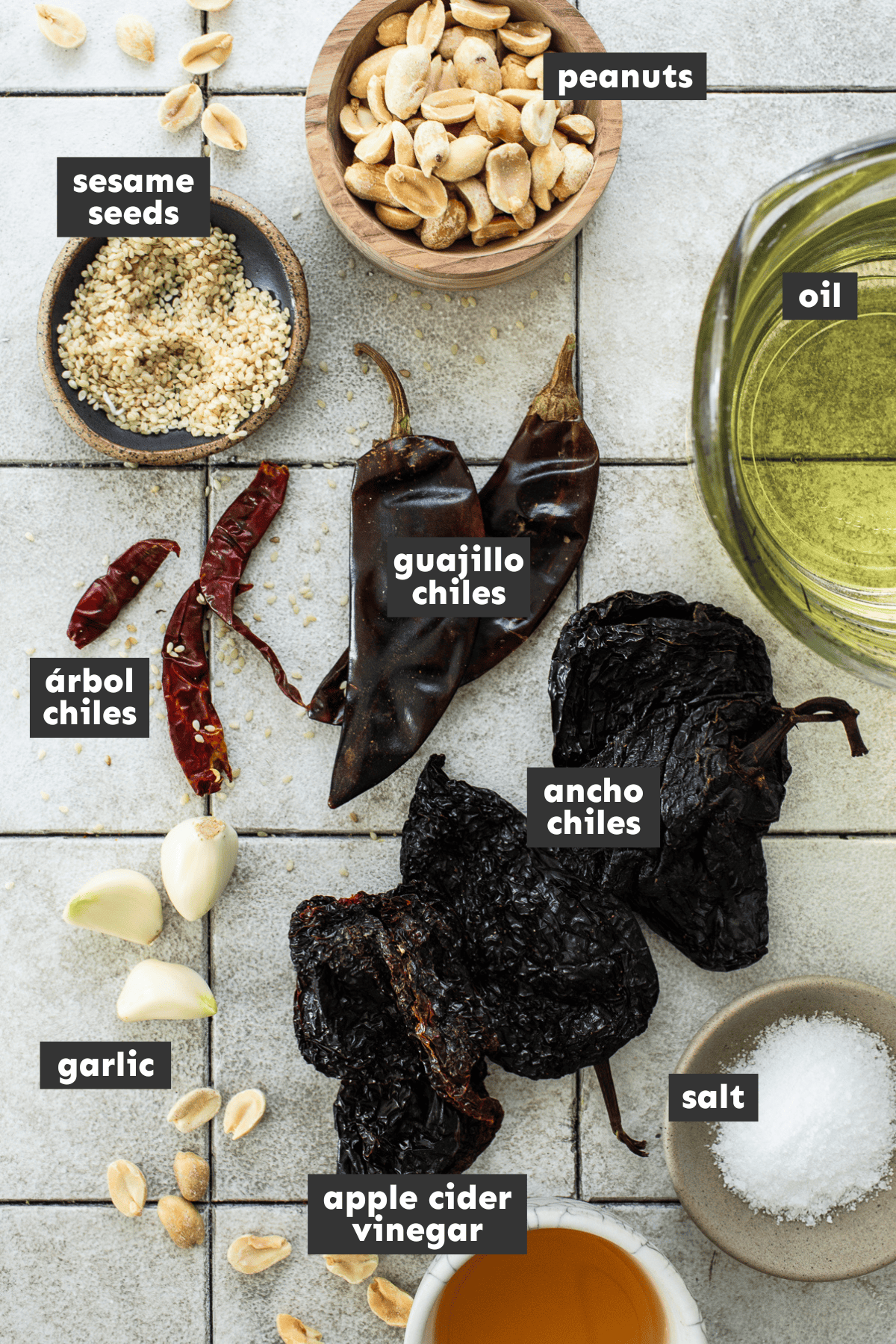
Salsa Macha Ingredients
- Dried chiles: It’s important to use a fair amount of dried chiles for salsa macha. I used a combination of ancho, guajillo, and árbol chiles. You can easily purchase the chiles in Hispanic grocery stores, some national grocery store chains depending on your location, or online.
- Oil: I recommend using a neutral tasting oil so as to not overpower the flavor of the chiles and other fried ingredients. I used canola oil, but grapeseed oil is also a popular choice.
- Nuts and Seeds: I used roasted unsalted peanuts and sesame seeds. The peanuts are a key ingredient in salsa macha. It adds a nutty and almost creamy texture that is incredible.
- Garlic: Fried garlic adds an extra layer of flavor and hint of sweetness from the browning.
- Vinegar: Apple cider vinegar adds some tanginess to help cut the savoriness of the oil and chiles. You can also use white wine vinegar.
- Salt: A hint of salt to balance all the flavors.
How to Make Salsa Macha
Heat the oil in a large skillet or saucepan over medium-high heat. The oil should be hot enough that when a pepper is dropped into it, it will immediately start to sizzle, but not so hot that the oil is smoking.
Fry the chiles. Add the ancho, árbol, and guajillo chiles and lightly fry for 1 minute, stirring constantly, until nice and toasty. Be careful not to over-toast and burn them. Using a slotted spoon or spider strainer, transfer the peppers to a large blender and set aside.
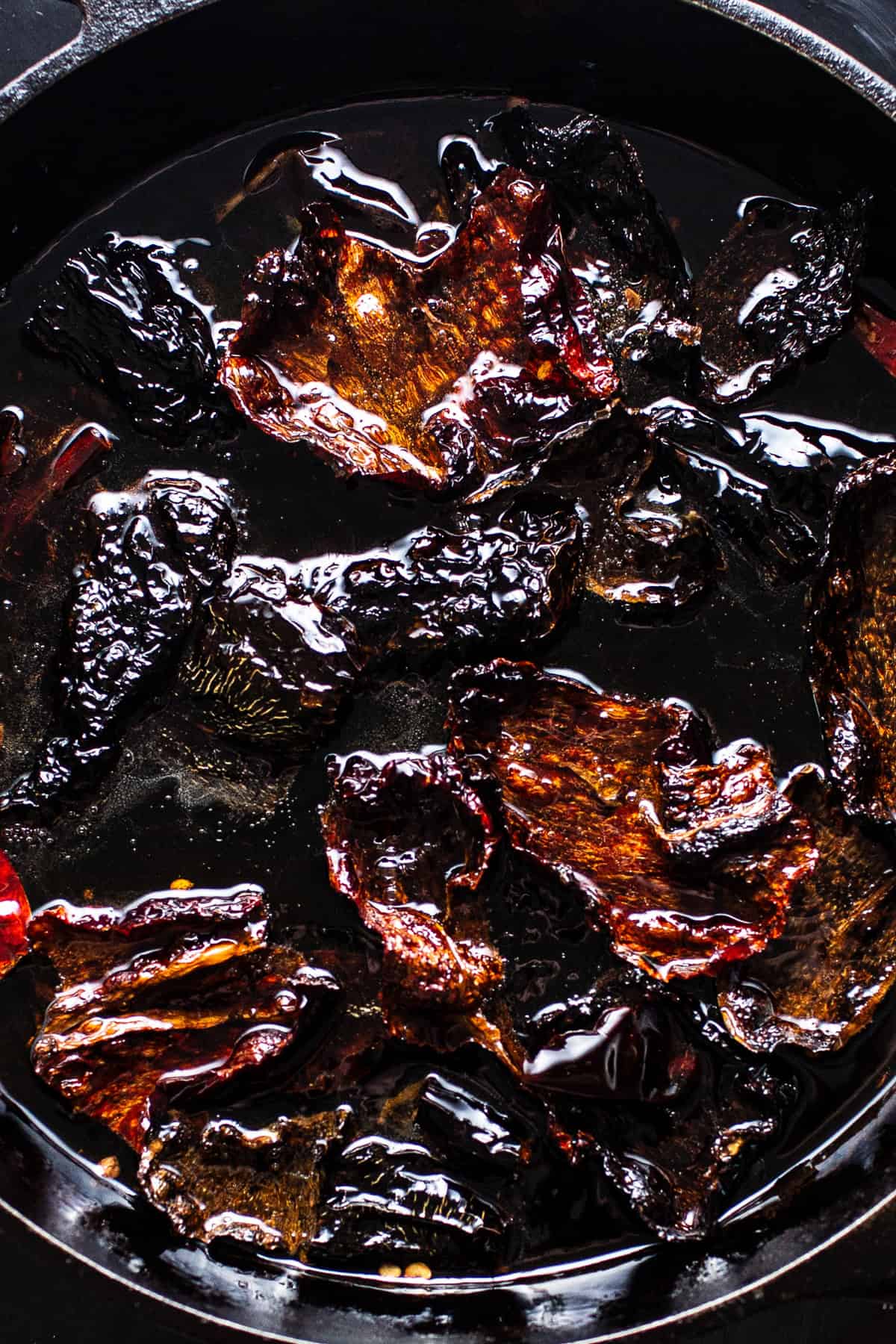
Lightly fry the peanuts, garlic, and sesame seeds for 30 seconds, stirring constantly, then remove the pan from the heat. Using a slotted spoon or spider strainer, transfer the peanuts and garlic cloves to the same blender.
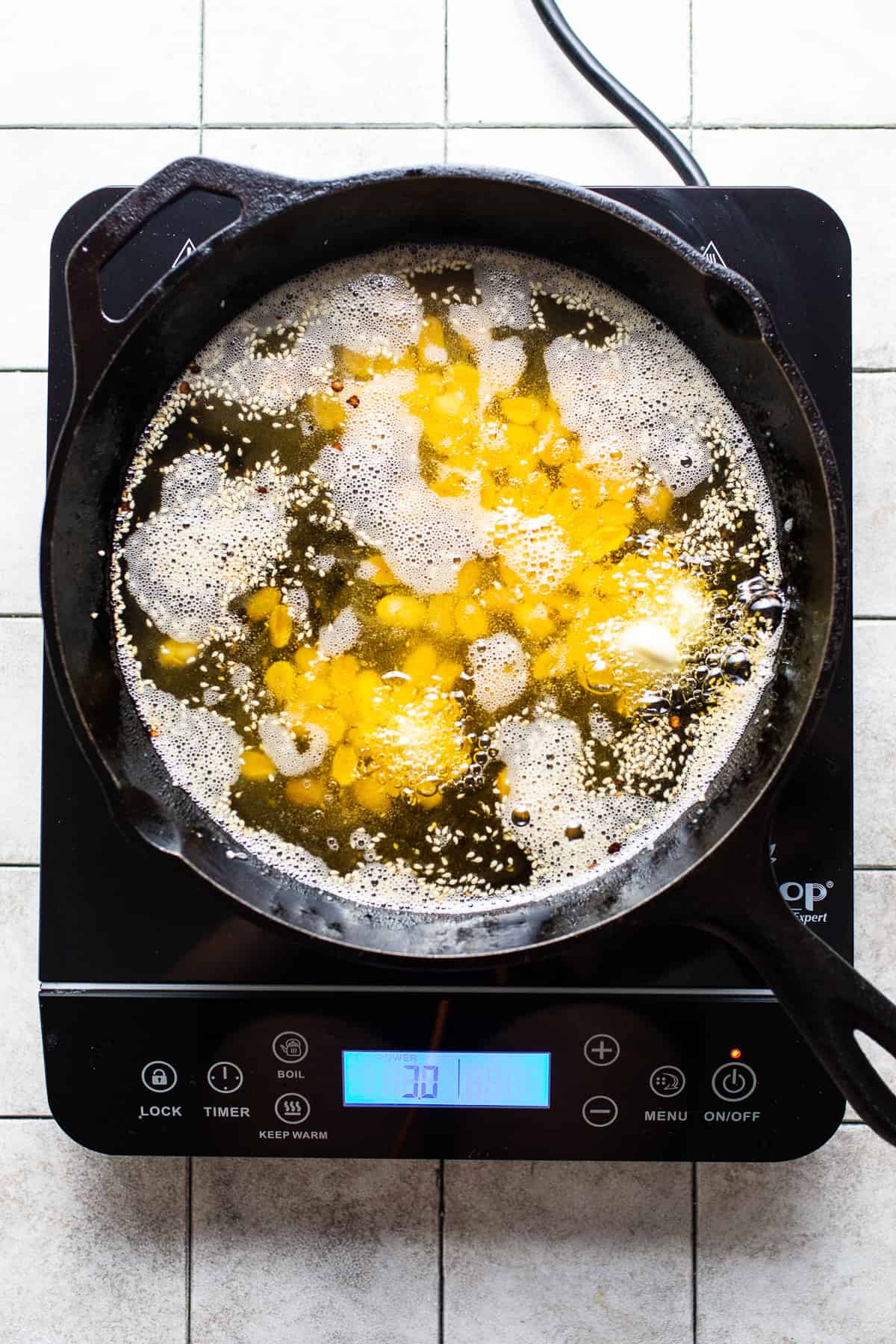
Let the sesame seeds and oil cool down for 5 minutes, then carefully pour them into the blender as well.
Add the apple cider vinegar and salt, and pulse the mixture 4 to 5 times in the blender until the pieces are fairly small and uniform in size but not completely pureed. There should be lots of crunchy bits. Taste and season with more salt as needed.
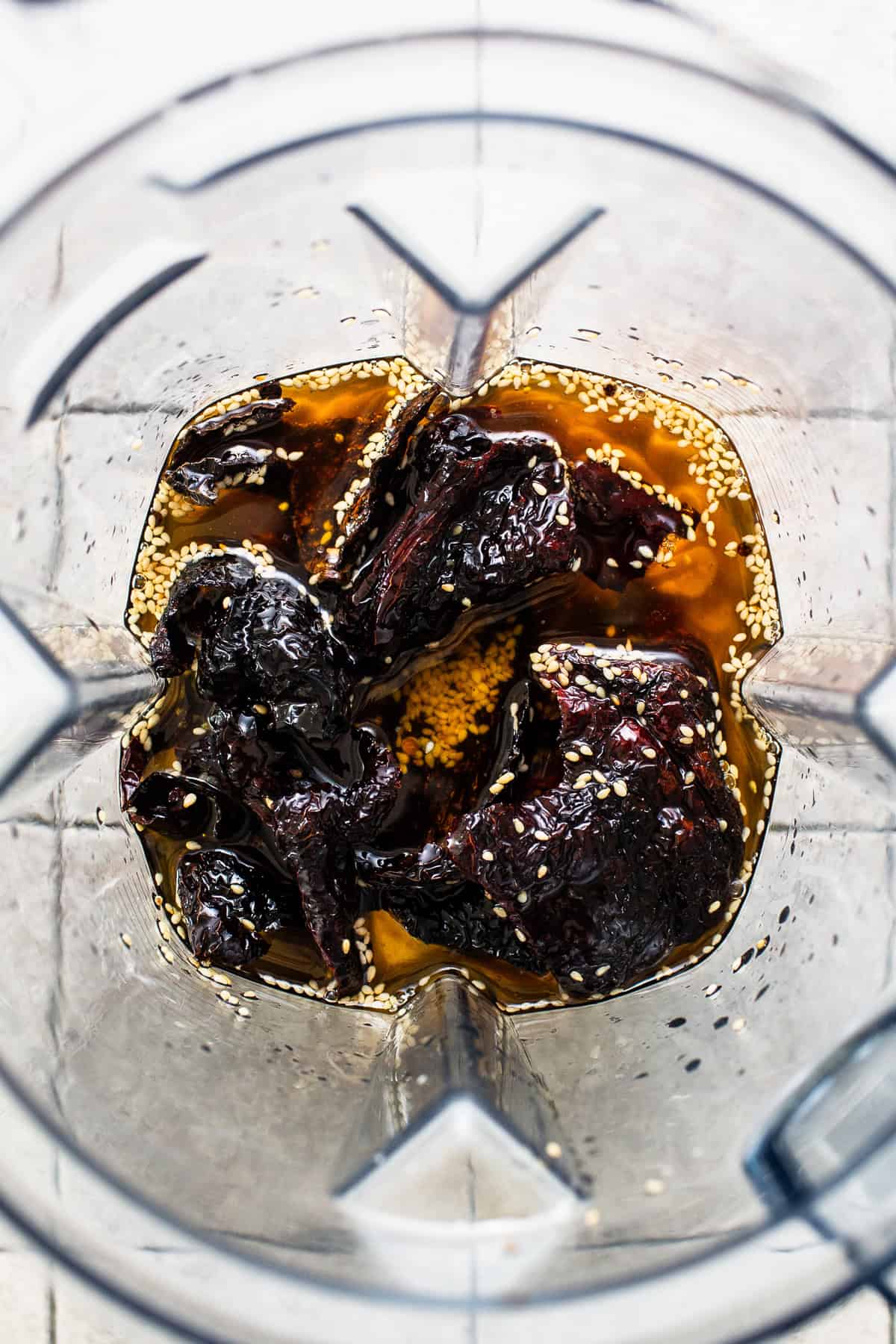
Serve immediately or store in an airtight container and refrigerate until ready to use.
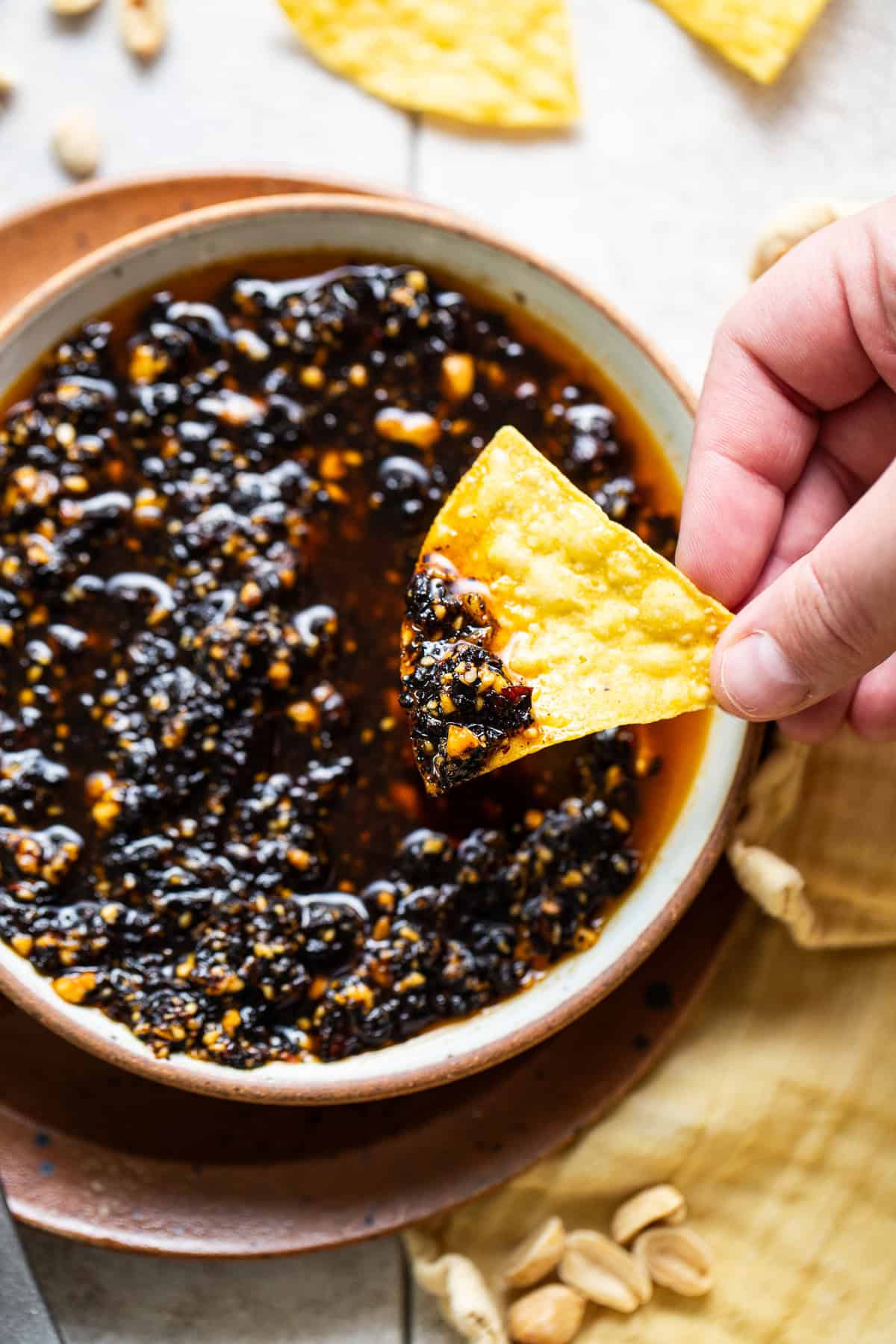
Recipe Tips
- Watch the frying time. Make sure you don’t toast the dried chiles for longer than 60 seconds. If they start to burn, the chiles can have a bitter taste.
- Adjust the consistency. Salsa macha can be smooth and fully blended or pulsed and have a chunky consistency with bits of the toasted chile and peanuts (similar to Chinese chili crisp). You can adjust the consistency to your liking.
- Adjust the heat: You can control the spice level by varying the types and amounts of chiles used. For a milder sauce, reduce the number of árbol chiles.
Variations and Substitutions
Salsa macha can have some slight variations, but most recipes are fairly similar. Here are some easy substitutions:
- Dried chiles: Swap guajillos for chile pasilla for a slightly smokier taste. You can also use mulato chiles instead of ancho.
- Apple cider vinegar: Use white wine vinegar instead or even lemon juice.
- Nut-free version: If you have a nut allergy, replace the nuts with additional seeds such as sunflower or pepitas.
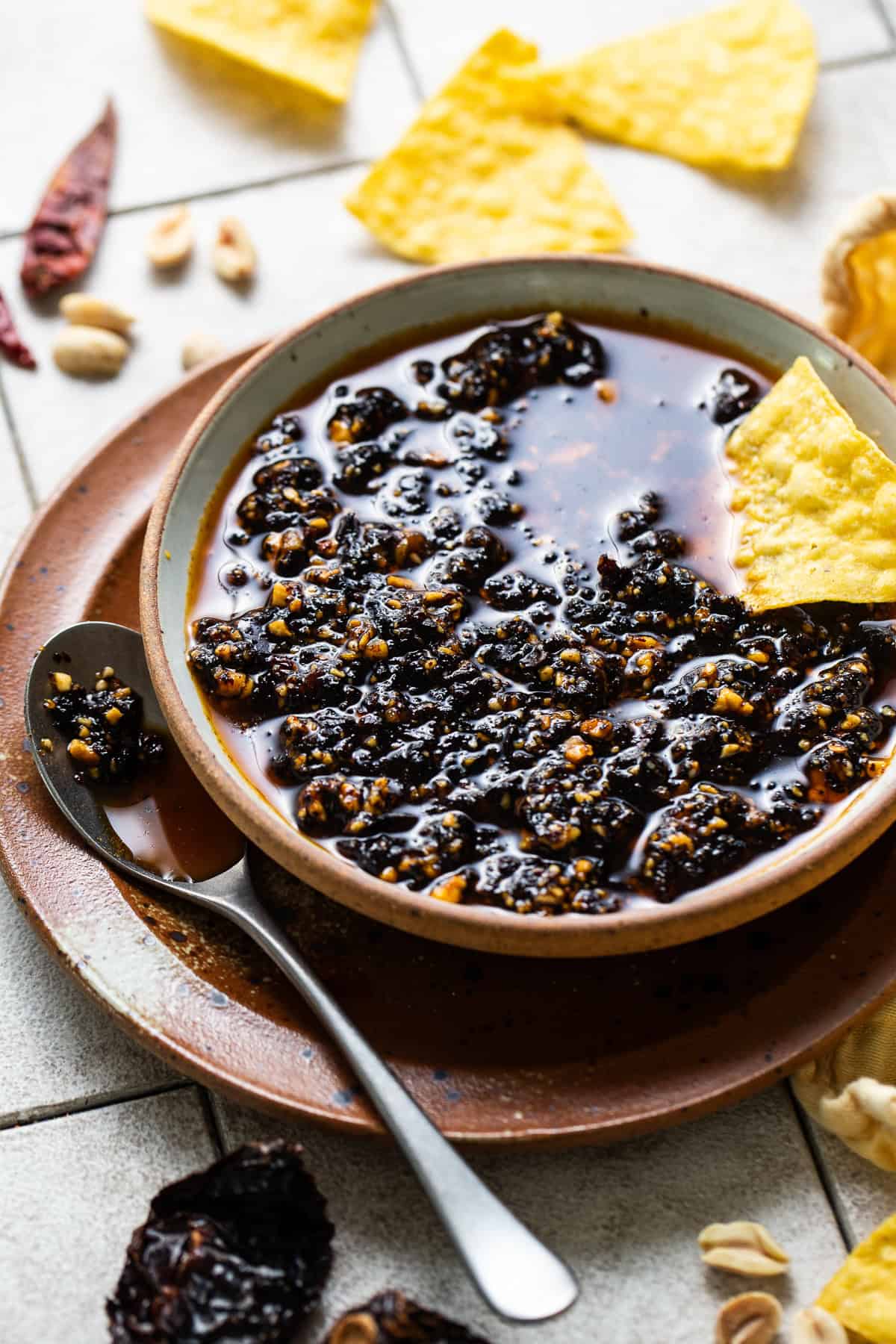
Ways to Use Salsa Macha
Salsa macha is best served as a topping or garnish on your favorite Mexican recipe. I like to serve it with these recipes:
- Drizzle it on top of chorizo and eggs for a spicy and savory breakfast.
- Top your caldo de pollo or caldo de res with salsa macha for extra flavor.
- Drizzle on your carne asada tacos or tacos dorados.
- Pair it with some classic crunchy Mexican toppings like Mexican Pickled Onions or Pickled Jalapeños to raise the level of your favorite tacos or burritos to something outstanding.
Storage
Keep salsa macha in a sealed jar in the fridge. It will last for up to a month.
For longer storage, freeze the sauce in ice cube trays, then transfer the frozen cubes to a freezer bag. Thaw as needed.
More Salsas

Salsa Macha
Ingredients
- 2 cups vegetable oil (I used canola oil)
- 4 ancho chiles, stemmed, seeded, and torn into large pieces
- 3 árbol chiles, stemmed
- 2 guajillo chiles, stemmed, seeded, and torn into large pieces
- ⅓ cup roasted unsalted peanuts
- 3 cloves garlic
- 1 tablespoon sesame seeds
- 2 tablespoons apple cider vinegar
- 1 ½ teaspoons kosher salt, plus more to taste
Instructions
- Heat the oil in a large skillet or saucepan over medium-high heat. The oil should be hot enough that when a pepper is dropped into it, it will immediately start to sizzle, but not so hot that the oil is smoking.
- Add the ancho, árbol, and guajillo chiles and lightly fry for 1 minute, stirring constantly, until nice and toasty. Be careful not to over-toast and burn them. Using a slotted spoon or spider strainer, transfer the peppers to a large blender and set aside.
- Add the peanuts, garlic, and sesame seeds and lightly fry for 30 seconds, stirring constantly, then remove the pan from the heat. Using a slotted spoon or spider strainer, transfer the peanuts and garlic cloves to the blender.
- Let the sesame seeds and oil cool for 5 minutes, then carefully pour them into the blender.
- Add the apple cider vinegar and salt, and pulse the mixture 4 to 5 times in the blender until the pieces are fairly small and uniform in size but not completely pureed. There should be lots of crunchy bits. Taste and season with more salt as needed.
- Serve immediately or store in an airtight container in the fridge for up to a month.
Notes
- Watch the frying time. Make sure you don’t toast the dried chiles for longer than 60 seconds. If they start to burn, the chiles can have a bitter taste.
- Adjust the consistency. Salsa macha can be smooth and fully blended or pulsed and have a chunky consistency with bits of the toasted chile and peanuts (similar to Chinese chili crisp). You can adjust the consistency to your liking.
- Adjust the heat. You can control the spice level by varying the types and amounts of chiles used. For a milder sauce, reduce the number of árbol chiles.
Nutrition
Nutrition information is automatically calculated, so should only be used as an approximation.
This recipe was originally published in February 2021, and has been updated with new photos, more helpful tips, and a slightly updated recipe.
Photography by Ashley McLaughlin.

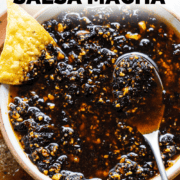
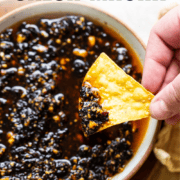
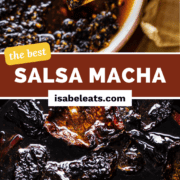
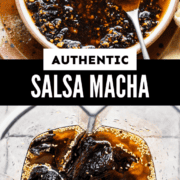
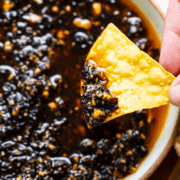
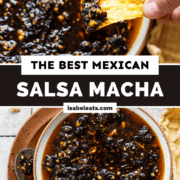
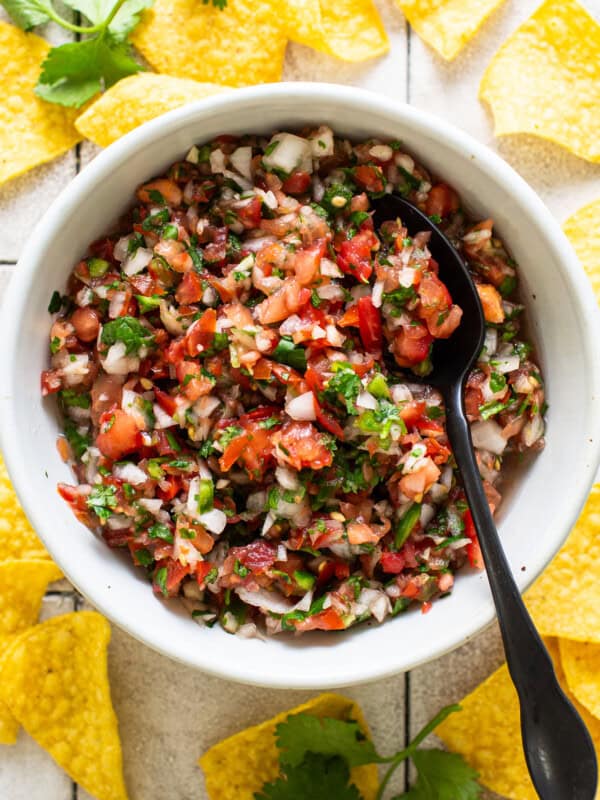
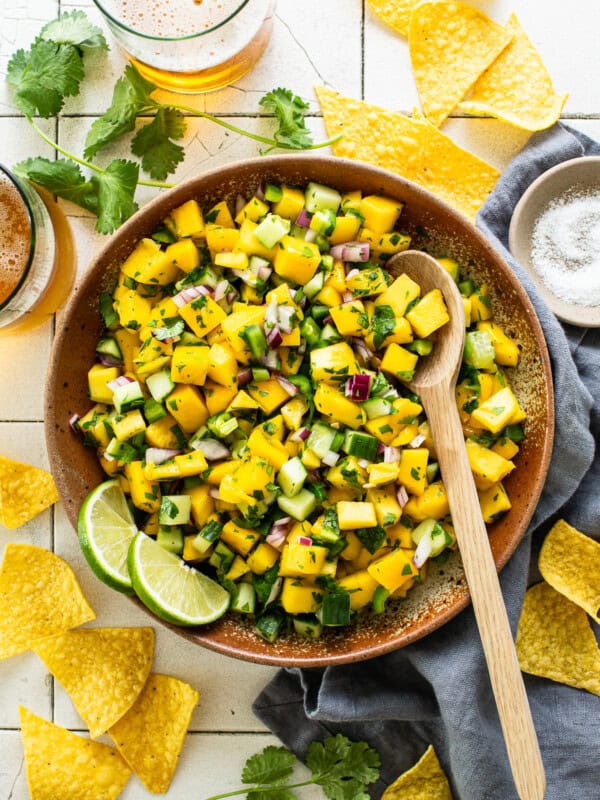
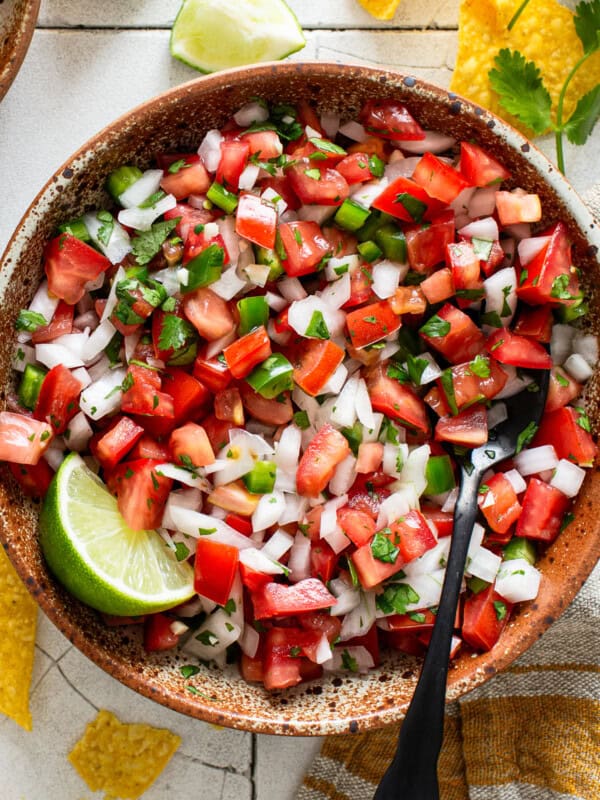
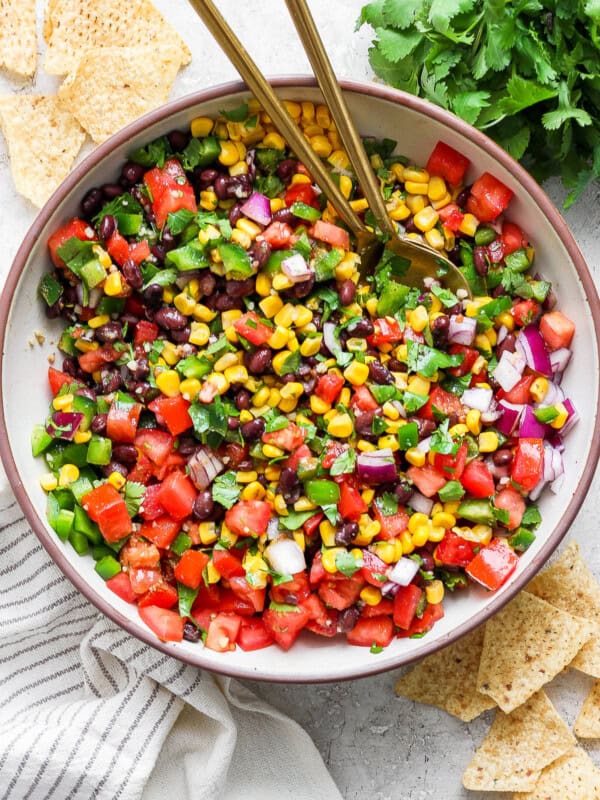









Absolutely delicious, and super unique!
Fantastic… yummy
Have you made chicken mole? Will you make chicken mole?
Hi! Isabel currently doesn’t have a recipe for mole but I’ll add it to her list. Thanks!
Can you substitute ancho chili power instead of the dried seed?
Hi Teresa! We haven’t tried that but you are welcome to try!
Unfortunately, the amount of apple cider vinegar was WAY too much. It’s the main flavor profile component in the the macha. So much so that it lessens the flavor of the peppers. I understand the need for acidity but 1/2 cup is extreme. I’d say 3 tablespoons at the most and make up the rest of the liquid with water.